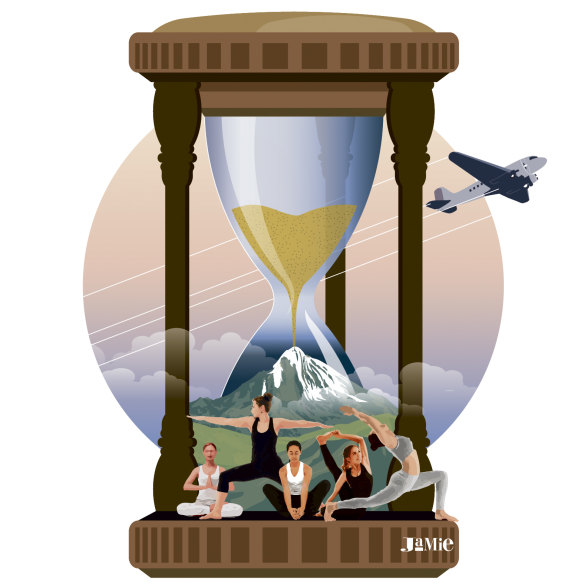It’s the first day of a 10-day women’s mindfulness-focused trek I’m organizing in the Everest region of Nepal, and our 8am flight to Lukla is delayed. A delay can be annoying on any flight, but when it’s a flight on a 20-seater plane that required us to get up at 3am, a five-hour bus ride so bumpy some of us were airborne, and landing at what’s widely considered the most dangerous airport in the world, it can be a real bummer for already frayed nerves.

There is no point in worrying about things you cannot control.
Credit: Jamie Brown
Ramechhap Airport, which often hosts Everest flights in peak season when Kathmandu Airport is too busy, is small. There is a covered outdoor area and a small indoor area that can barely fit the 200 or so travelers waiting for their flights for the day. Within half an hour of the announcement of the delay due to poor visibility, a woman in our group starts stalking the perimeter, a wildcat looking for a way out. I’ve been traveling in this part of the world long enough to know that there might be no way out for quite some time.
Since the focus of this trip is mindfulness, it’s my job to bring some peace to the nagging group. I had imagined our first journaling session would take place in an open field under snow-capped peaks and a clear blue sky. Instead, we sit cross-legged in a circle on the cold, tiled airport floor and begin to write.
As fidgety travelers mill around us, we begin scribbling a page of sentences that begin with the words “I notice,” writing down the things we see, hear, feel, and smell around us. The exercise is similar to the mental note-taking methods psychologists often use to help anxious patients calm down, and is designed to draw us directly into the present moment.
It works. By anchoring ourselves in the here and now, by writing about the feeling of the cool tiles under our butt, the butterflies in our stomach about the difficult hike ahead, or the sound of footsteps around us, we stop worrying so much about a future we can’t control.
Once we’ve let go of our resistance to what is, we start to relax and enjoy the day. Two of the women roll out mats and start practicing yoga while other travelers gawk and giggle. We naturally split into smaller groups and get into long, rambling conversations. After a few hours, we (mostly) stop asking, “How much longer?” We drop our expectations, give up the idea of how things should be today, and just go with the flow.
Load
Luckily, our flight is cancelled today. After nine hours of hanging around at Ramechhap airport, we head to a nearby camp for the night. Our day may have gone very differently than planned, but when we finally fly out the next morning, we are all closer and more present to one another than we probably would have been if everything had gone smoothly.
As our small plane touches down on the steepest runway in the world, with the jagged peaks of the Himalayas looming around us, I am struck by the feeling that we always have a choice in how we respond to the obstacles in our lives, and that it is our responses to our problems and the stories we tell ourselves about them that cause us the most pain, not the problems themselves.
Spoiler alert: The Himalayas have given us numerous other opportunities to realize how much happier we could all be if we could only learn to see life’s little interruptions as opportunities to practice patience and connection.

